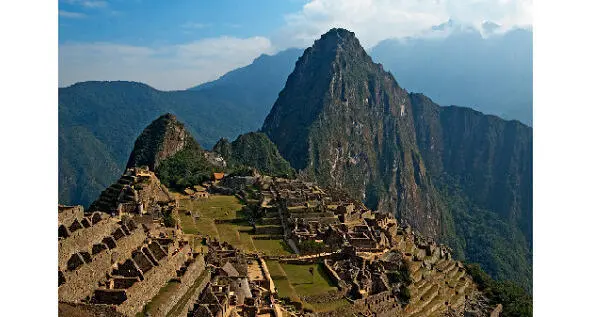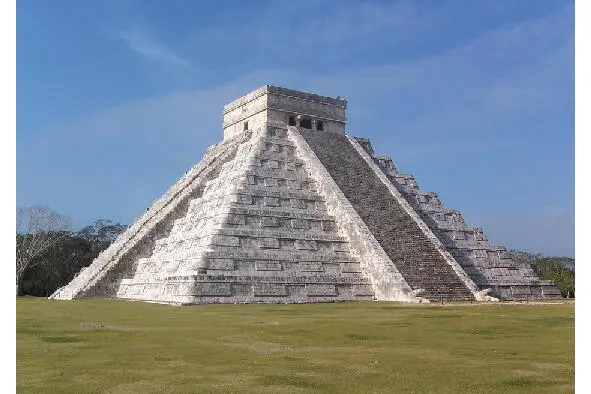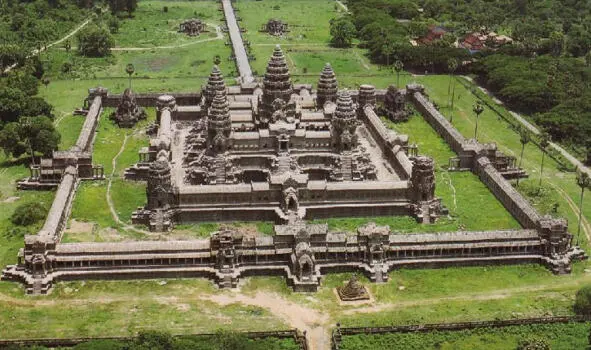Лим Ворд - Библия Времени. Найди свое
- Название:Библия Времени. Найди свое
- Автор:
- Жанр:
- Издательство:неизвестно
- Год:неизвестен
- ISBN:9785449318695
- Рейтинг:
- Избранное:Добавить в избранное
-
Отзывы:
-
Ваша оценка:
Лим Ворд - Библия Времени. Найди свое краткое содержание
Библия Времени. Найди свое - читать онлайн бесплатно ознакомительный отрывок
Интервал:
Закладка:
44 BC. – Guia Julia is murdered by conspirators, led by Mark Brutus (possibly the illegitimate son of the dictator), the body burns the people – at the stake from their own mourning clothes, judges’ chairs, benches, etc., after which the Civil War in a bloodless country flares up with renewed vigor.
2a. Guy Julius Caesar, the only authentic, lifetime sculpture, quite different from the generally accepted images of a relatively young Caesar (2).
3. Gaius Julius Caesar Octavianus Augustus, the adopted son of Caesar, his successor, who finally won the Civil War, the first virtual Roman emperor.4. Guy Julius Caesar Augustus Germanicus (Caligula), 12—41 gg. AD, the second emperor, by definition of Lucius Seneca «boundless depravity combined with unlimited power.» Eight months after the ascension to the throne, the initially peaceful Caligula becomes ill, perhaps encephalitis, having recovered, she becomes an insane dictator. Favorite expression – «Let them hate, if only they should be afraid» – Oderint, dum metuant (observer, doom mit (y) guy). In 41, the conspirators surround the emperor in one of the underground passages from the theater to the baths. The last thing that Caligula hears – the formula used in the sacrifice – hoc age – «Do this» (ok aje) – after that gets a sword in the chest from his bodyguard.
Together with Caesar, Praetorians kill his wife and two-year-old daughter.
5. Nero Claudius Caesar Augustus Germanicus, 37—68, the Roman emperor, the last of the Julius-Claudian dynasty, the persecutor of Christians, nicknamed them «Antichrist.»
6. Flavius Aetius, commander of the Western Roman Empire, 390—454, according to historians-contemporaries «The Last (Great) Roman». The winner of Atilla in a two-day battle at the Cataluun Fields, in 451 (180,000 killed on both sides). Three years later, the Emperor Valentinian the Third, fearing the ambitions of his best diplomat and commander (he wants to extradite his daughter for the son of the ruler), kills Aetius right in the palace, at the audience. A year later, Rome, the former great capital, is captured and robbed by vandals (Vends). Twenty years later, the entire Western Roman Empire is fragmented into a number of barbarian kingdoms.
7. Roman legion (legionis – military collection) of the heyday of the Empire. Modern reconstruction. The army consists of 5—7 thousand, later about 4,5 thousand infantry and auxiliary units. Heavy cavalry (equities) – 300 people, divided into divisions (turmas) for 30 people. Archers – 200 people; They act from the flanks, releasing arrows along the line of raised shields. Great – from the lat. velox – «fast» – several hundred fighters – irregular infantry, usually recruited from local allied tribes, or the youngest legionaries. Armament is a round shield, with a diameter of 90 cm, a «Parma», a helmet, several darters of the «Gasta velitaris», a length (with an iron tip of 30 cm) 120 cm and a short (50 cm.) Roman sword – «gladius». The highest glamor of a daring warrior is a wolf’s hide over his helmet. The main defense against arrows, and other weapons – their own agility. In a free, open formation, evading enemy jets with jumps, they are ordered to throw their spears into the formation of the enemy and quickly retreat for the ranks of the heavily armed infantry.
The first line, in fact, built for the battle of the legion – hastati (Roman hastati, spearmen), soldiers aged 20—25 years, who so need combat experience. Arms – chain mail, or, in the era of the Empire – plate armor, rectangular shield scoot, sword of gladia, dagger pugio, two two-meter dart – piluma.
The second line is principles, (Latin princeps – the first). Warriors in the prime of life, 25—35, sometimes 40 years. Giving the young men the opportunity to gain experience, they let the gastata into the intervals between maniples and continue the battle to the victorious end.
On the third line there are triarius (triarius, lat. «Third») soldiers of 40—45 years old, veterans, the main reserve of the legion. Their main armament is long percussion javelins.
The army is governed by six tribunes (people’s representatives) and, as a rule, a representative of the tribal aristocracy – the legate.
The Legion in the Republic epoch consists of 30 manipuli («handful» or «hand»), two centurions (centum – one hundred) in each. Despite the name, the century has 60 to 120 people. Manipuls are combined into ten cohorts (Latin cohors, «fenced place») for 360 people. One of the cohorts (First) is considered praetorian, elite, has a doubled composition.
During the time of the Empire, the manipulation of the tactical unit disappears, leaving a cohort of 6 centurions.
Turned out of the marching legion follows the battlefield with a complex system – manipuli or centurions, staggered. So it’s easier to move around on rough terrain. Then squares composed of fighters are converted into three lines. «Brothers» toss the pilus, sometimes turning the enemy to flee this one with a dagger volley, close shields and draw swords…
8. Classic armor of the Roman legionary of the era of the heyday of the Empire «Segment of the Segment». The picture is redrawn from the illustration of the book of the Italian historian Peter Konolli, a professional artist, for the author’s article in the children’s magazine «Lefty».
9.10. Contours of details, fastenings and decorative elements, made on own reconstruction «Segmental Segments». The size of the cage in the figure of armor of 15 mm., Decorative elements and fasteners (including the belt «balteus» not shown here) is 4 mm. Shoulder plates are fastened with folding hinges with figured overlays. The parts are jointed by screws 3 mm, and, after fitting – with rivets.
1 – a strap for the front strap, 2 – a circle for the decorative element (8), 3,4 – straps for the fastening straps, 5 – the arrow for the apron (4), 6 – the apron badge (40), 7 – the lower badge of the apron (4), 8 – plates that cover the belt of the belt (12), 9 – fastenings on the plates 14 and 15, at an angle (6), 10 – elements of the joints of the shoulder and waist parts of the armor: wire hooks on top of them, 11 – fasteners on the plates 16 and 17, and below, except for the lower two rows (16), 12 – skipping, illustrator error, 13 – looping (16), 14 – front loop for the hook of the waist part of the armor (2), back hook loop (4).
Inca, Maya, Aztecs
The names of these peoples, the locations of their states are often confused. Historians, despite their neighborhood, believe that they developed completely independently.
The Incas. The state is Tawantisuyu. The west coast of South America, starting from the northern territories of modern Chile up. One thousand two hundred years BC. – the first ruler of Manko Kapaka, the latter, who led the revolt against the Spaniards – Tupac Omar (1570—1572). The Inca banner was like a rainbow. There is no monetary system, the benefits are distributed according to the established order.
Aztecs (the name of the mezika, hence the current «Mexico»). They came to the south of Mexico from the North of the continent, in the thirteenth century. The Aztecs (North American Indians are not at all savages like the colonialists-Europeans) built Tenochtitlan, the future Mexico City on a kite-ridden island, became rulers of local tribes. But in 1519 the Aztecs saw the Spaniards, and six years later their empire ceased to exist. Presumably, by this time the Indians were 95% chopped smallpox and chickenpox imported by Columbus in 1492, and spread to both continents. A huge, equal in culture to Egypt, an unknown, literally Martian world, moved to the region of legends.
For a warrior and a priest it is quite permissible to consider writing, at leisure, sublime verse. Listen to three excerpts of the author’s hymns of the ethno-linguistic group Nahua – to which our Aztecs also belong:
May our land be forever!
Yes, the mountains are unbreakable!
so says Iyokuan Kuezpaltsin
Here, in Tlaxcala, in Wesoszinco
Let them satisfy everyone without withdrawing
and ruddy maize, and cocoa.
May the Earth be forever!
(author Ayokuan Kuezpaltsin)
We got intoxicated, mezhiki, in Michuacan
We were invited to a feast, we went after the prey
we came and finally got drunk from the fight
…And they saw how our warriors fled
as the gold trembled and faded banners from the feathers of ketsal
If only warriors become prisoners it does not happen to hurry – so this was not with you
If young warriors become prisoners,
they will sacrifice them, they will doom to the slaughter
if it happens, what will we do?
We’ll bark fiercely, like jaguars
we, the eagles, the old people, with the eagles
avoid the same captivity, fear the slaughter
Hurry up – so it was not with you!
(«The Song of the Old Men», the author of the warrior Aishakatl)
I came, I get up, and now I will sing songs
I will raise songs for you, my friends
I am the voice of God, I own flowers
I am Temilocin, and I have come
make friends here
(Temilocin from Tlatelolco)
Mayan. The territory is slightly to the south of future Aztec possessions. The beginning of civilization – a thousand years BC. e. By the ninth century, the Maya society is in decline, the cause of which, as follows from the conclusions of geologists, is the long-term drought caused by the change in ocean currents. Remained truncated pyramid temples, a complex irrigation system and a perfect calendar.

1

2

3

4

5
1. The city of Incas, Machu Picchu, the territory of modern Peru, the height of the location is 2.5 km. Typical polygonal masonry – stones of different shapes are precisely adjusted to each other, like puzzles or mosaic. The Incas also built pyramids, but, these temples never reached the splendor of similar Mayan buildings.
2. One of the many Mayan pyramids, in present-day Mexico. Apparently, initially they were not meant for committing bloody rituals. However, the Aztecs who came to these lands used them (as claimed by the Spaniards) for the mass executions of prisoners of war, the broadcast of horror throughout the range of habitats.
3. For comparison – the classical Egyptian pyramid of Cheops (Khufu). The name «pyramid» – from the Greek word combination «fire inside». What is this «fire», and why he was needed inside this cult, the building, we do not know. In ancient times, the Egyptian pyramids were surrounded by walls, and located, apparently, in the middle of an artificial lake.
4. Angkor (Angko-Khmer, «City of Capitals»), the territory of present-day Cambodia. It was built in the beginning of the 9th c. AD, existed as a settlement until the 15th century. The largest city in the world in the Middle Ages (and now, in size, comparable only to American Los Angeles), covers an area of 24 by 8 km. 200 sq. M. km., or even, according to some modern studies, 3000 square meters. km.
Читать дальшеИнтервал:
Закладка:










